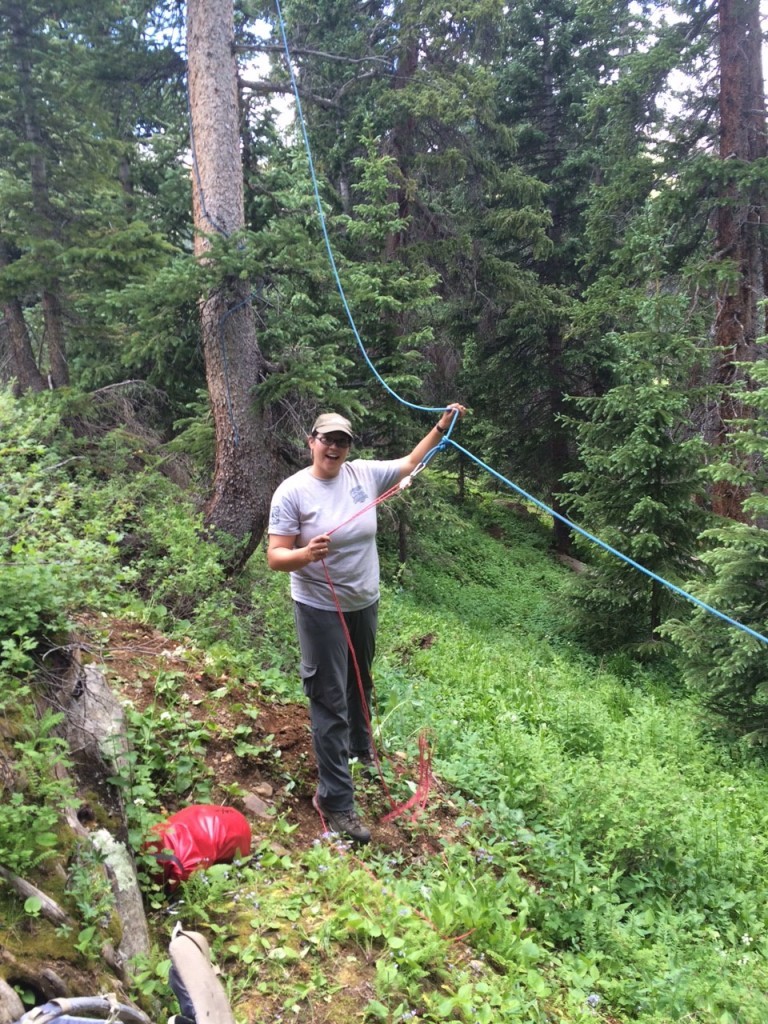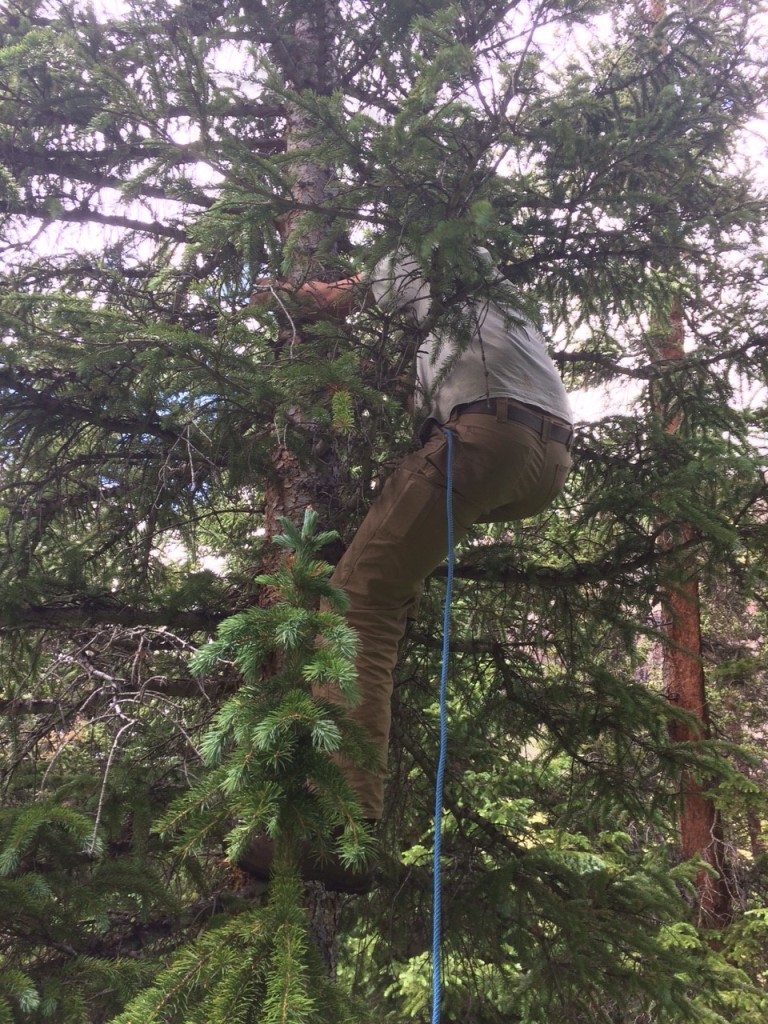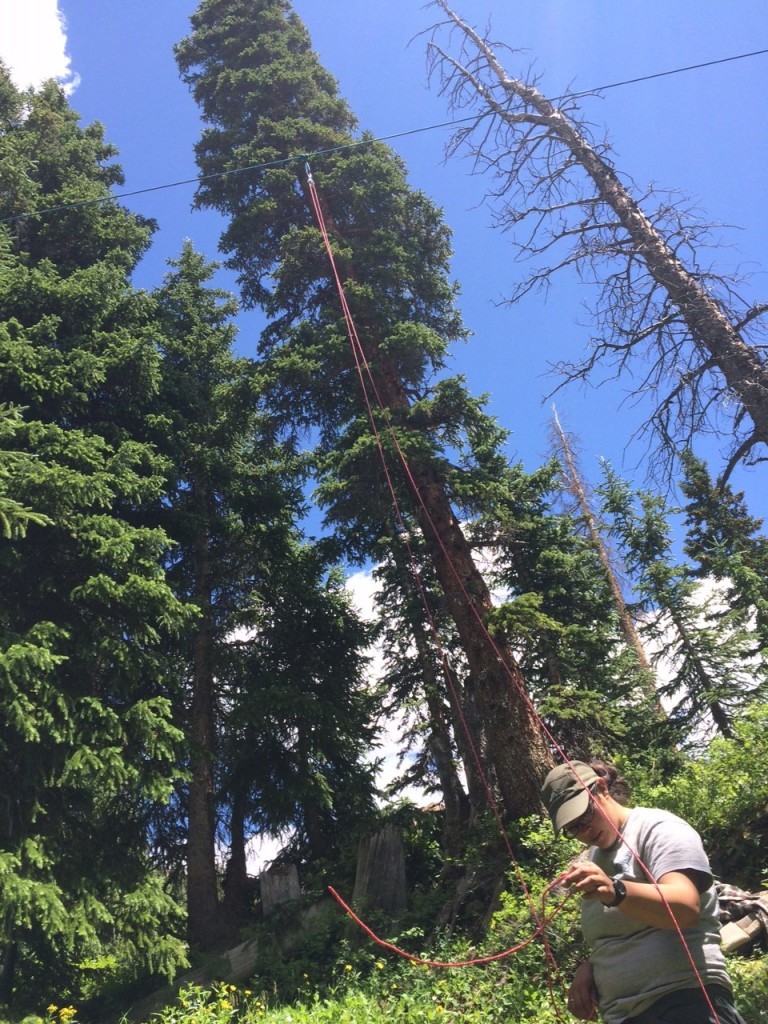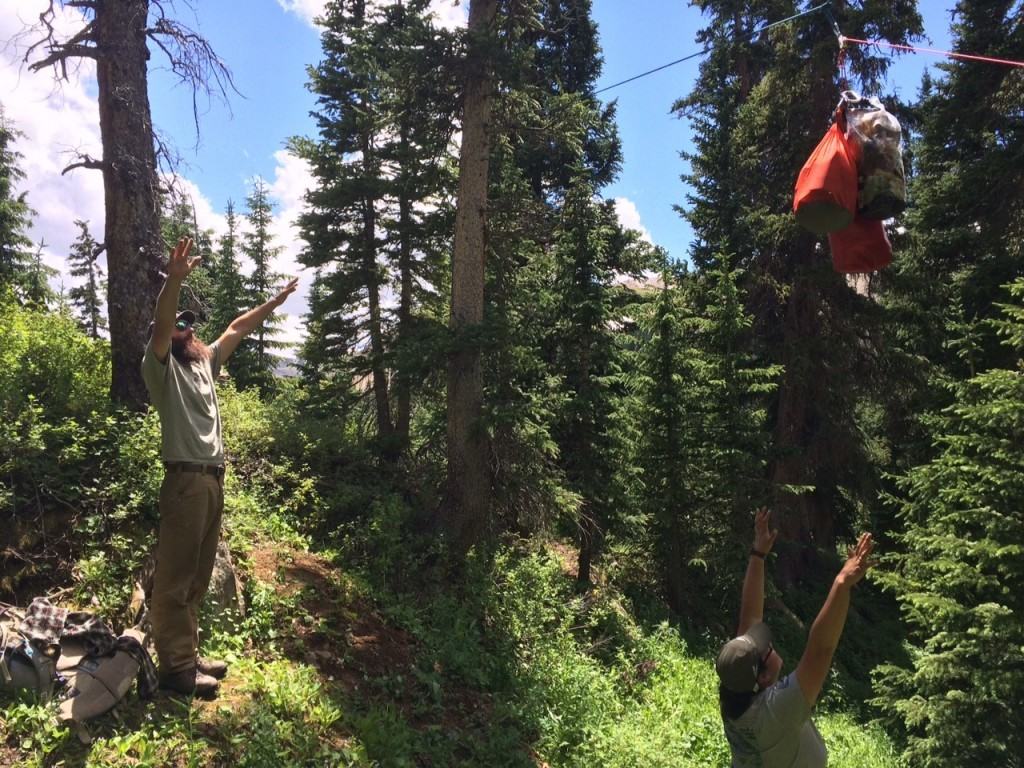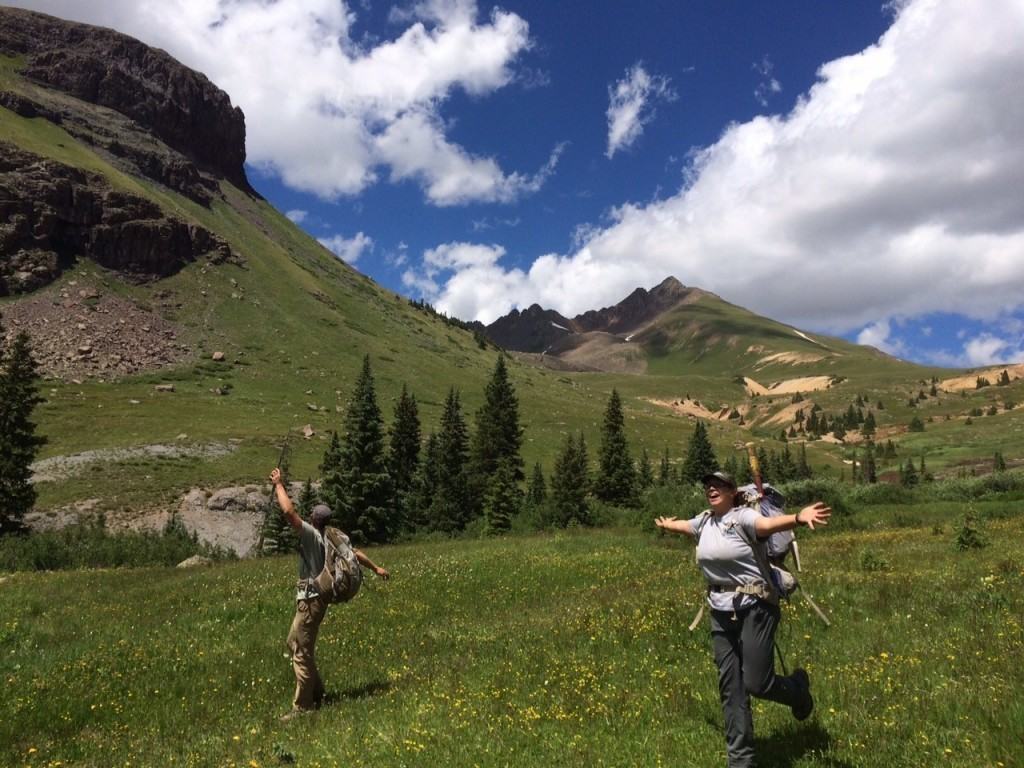Yea, yea, yea. The Uncompahgre Wilderness isn’t exactly grizzly country, along with the rest of Colorado. But, despite their massive size, menacing strength and speed, and the colloquial diction pervading from grizzly’s Latin name, ursus horiblus, it turns out that black bears can be far peskier and more aggressive than their larger relatives. But before “horrible” is called, or fingers pointed, it is important to remember that when it comes to bear trouble, we humans are most often the cause of trouble. When we visit the forest, we are visiting their homes and territory. Bear hangs are a simple way to prevent disaster, for you as well as the wildlife around you.
Check it out, Kristine has everything she needs.
- Two ropes – one we used is lengthy, 100 ft. the other is about 25 ft. long
- Stuff sac for food storage
- Carabineers
- Pulley – definitely a BONUS item, (for the plushy campers)
We took our gear and found two large, healthy trees, a considerable distance apart, about two-hundred feet away from our tents. This insures that we are a safe distance away in case the smells from our food storage sacs should attract animals. Another way to tie rope around a tree is by attaching the rope first to a rock and throwing it towards a high branch. When the rock tied to the rope loop over, knots can be ties from a standing height.
We like to use two ropes, so that one might stretch between two trees, and the other can be tossed over to hang in the middle. This makes for easy leverage and access, and a tidy final set up. Check out Kristine’s focus. Making it happen.
What a beauty! So, how effective are bear hangs, really? Well, when their not tied to a spring-pole, they are extremely effective. The thing is, like most forest animals, bears are scavengers; which means they aren’t going to waste too much time and energy on attempting a single food source. This bear hang is high, above Kristine, who’s a lengthy 5’9, and it also hangs considerable distances between two trees the ropes are attached. If a bear approaches this set up, he may make an attempt for the food, but he’ll move on after failing achievement. Besides bears, other smaller forest animals aren’t getting into your food either.
After your bear hang is up, your relief isn’t just your safety and the safety of your party, and it isn’t just the security of your meals for your trip, it is also the safety of the animals that live in the natural places you visit. Keeping yourself out of trouble is keeping wildlife out of trouble. This is not an LNTease, paws and think about it, and bear it how it is.
“LNTease” credit: Robin Zeller

